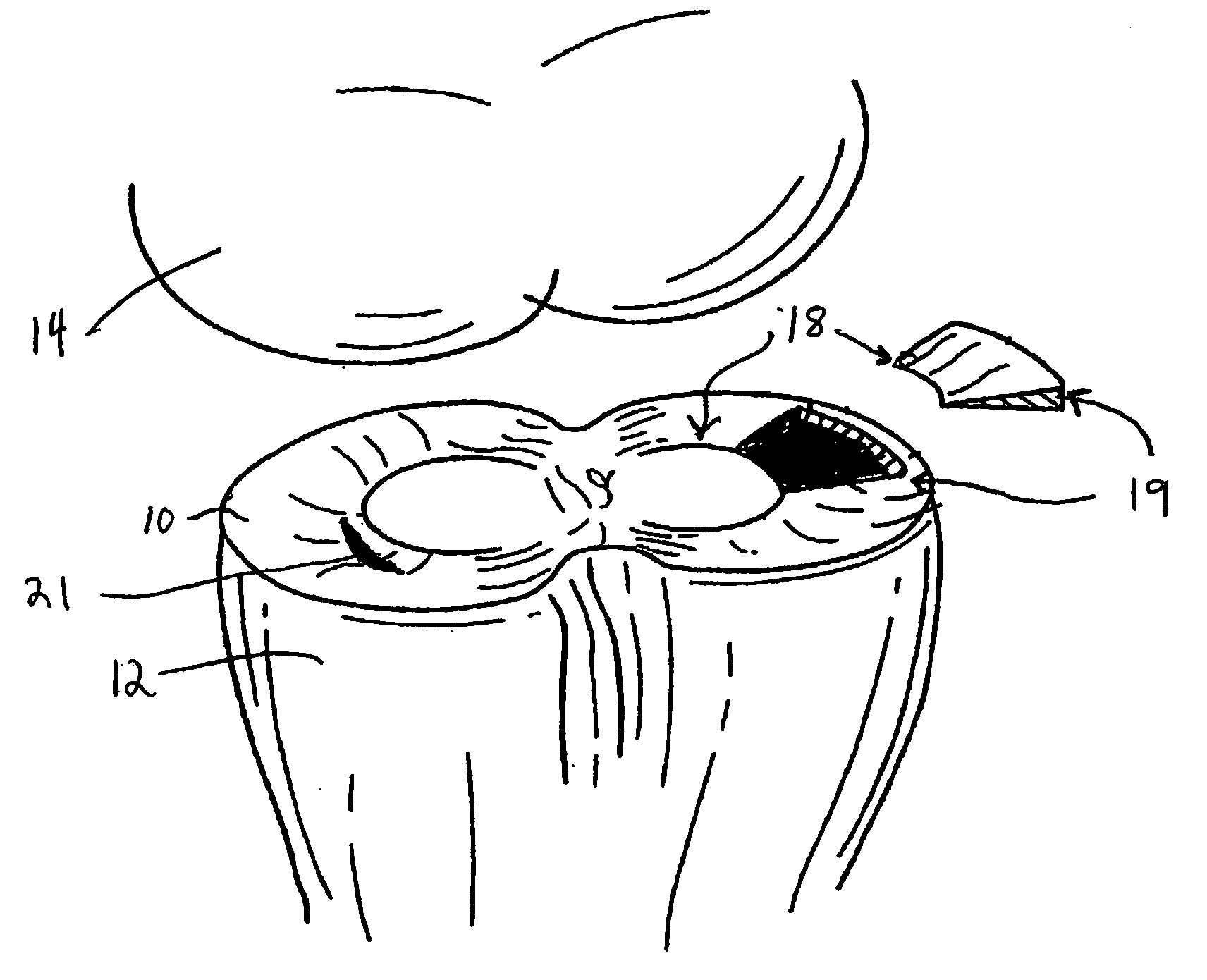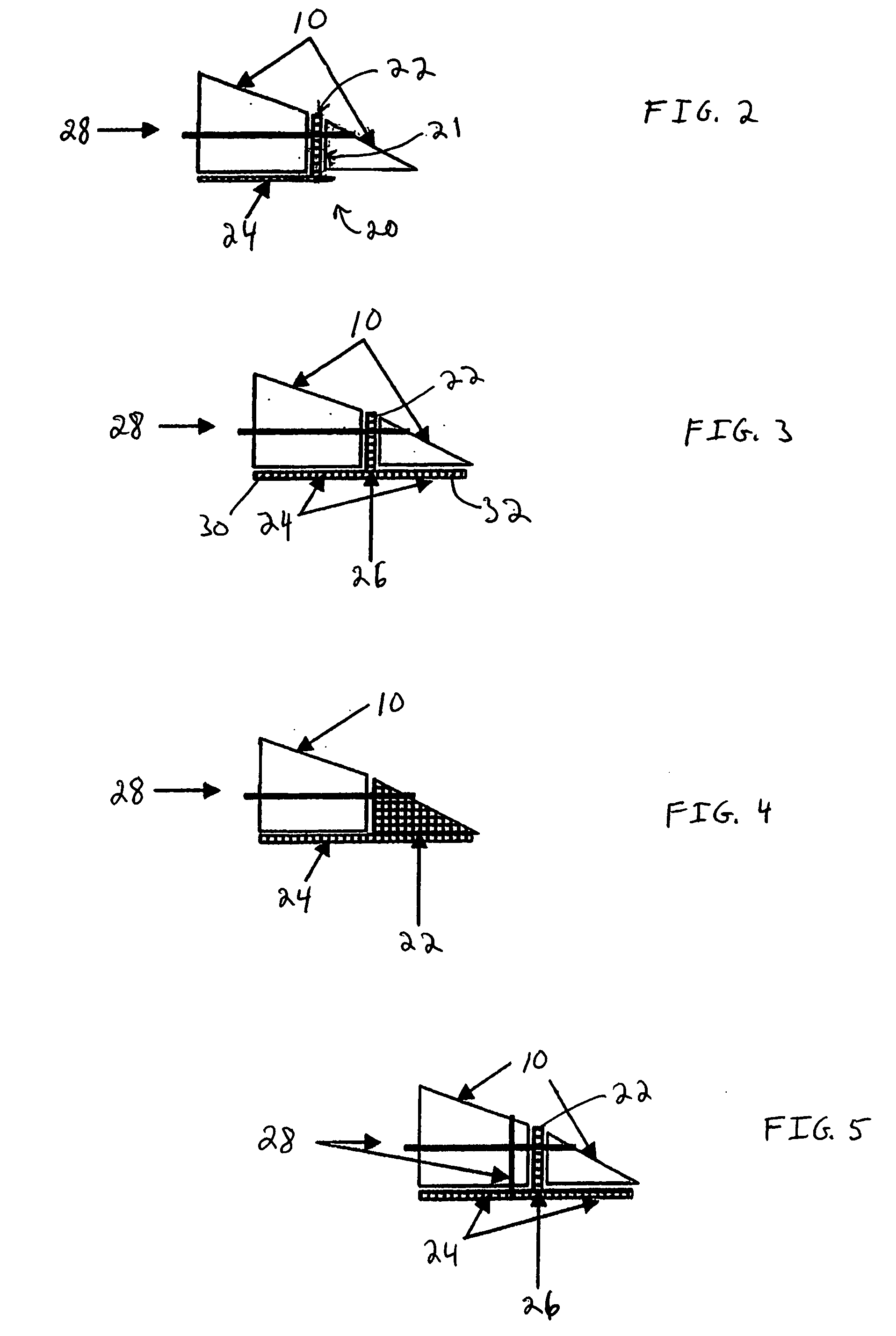Meniscal repair scaffold
a meniscus and scaffold technology, applied in the field of meniscus repair scaffold devices, can solve the problems of degenerative arthritis, gradual tear development with age, debilitating conditions, etc., and achieve the effect of encouraging meniscus healing
- Summary
- Abstract
- Description
- Claims
- Application Information
AI Technical Summary
Benefits of technology
Problems solved by technology
Method used
Image
Examples
example
[0092] The placement of tissue implants in proximity to the synovium was compared and evaluated using a tissue repair implant constructed from a nonwoven material of 50 / 50 PDS / VICRYL. The implant had dimensions of approximately 11 mm×7 mm×1 mm and a density of 236.6 mg / cc.
[0093] The animals used in this study were Nubian goats. A medial approach to the stifle joint was made. The joint capsule on either side of the medial collateral ligament was incised. The medial collateral ligament was isolated and cut mid-substance. Using a biopsy punch, a full thickness defect was made in the mid-portion of the meniscus. The platelets in the blood were concentrated to create platelet rich plasma (PRP) and a clot was formed from the PRP on the tissue implant. The tissue implant with associated PRP clot was then placed in the defect as explained below.
[0094] The tissue implant was stabilized with two polypropylene horizontal mattress sutures using a modified inside-out technique. The medial coll...
PUM
| Property | Measurement | Unit |
|---|---|---|
| density | aaaaa | aaaaa |
| density | aaaaa | aaaaa |
| diameter | aaaaa | aaaaa |
Abstract
Description
Claims
Application Information
 Login to View More
Login to View More - R&D
- Intellectual Property
- Life Sciences
- Materials
- Tech Scout
- Unparalleled Data Quality
- Higher Quality Content
- 60% Fewer Hallucinations
Browse by: Latest US Patents, China's latest patents, Technical Efficacy Thesaurus, Application Domain, Technology Topic, Popular Technical Reports.
© 2025 PatSnap. All rights reserved.Legal|Privacy policy|Modern Slavery Act Transparency Statement|Sitemap|About US| Contact US: help@patsnap.com



